Welcome to a culinary journey into the heart of Italian-American tradition with our cherished family recipe for Italian Wedding Soup. This isn’t just a soup; it’s a warm embrace in a bowl, a comforting classic that brings families together, especially on chilly evenings. Our rendition features tender, flavorful meatballs made from a perfect blend of beef and pork, nestled alongside vibrant escarole, and tiny pearls of Acini di Pepe pasta, all simmered in a rich, aromatic chicken broth infused with the unmistakable savory depth of Parmigiano Reggiano. More than just a meal, this hearty one-pot dish embodies generations of culinary heritage, promising a taste of authentic Italian comfort with every spoonful.
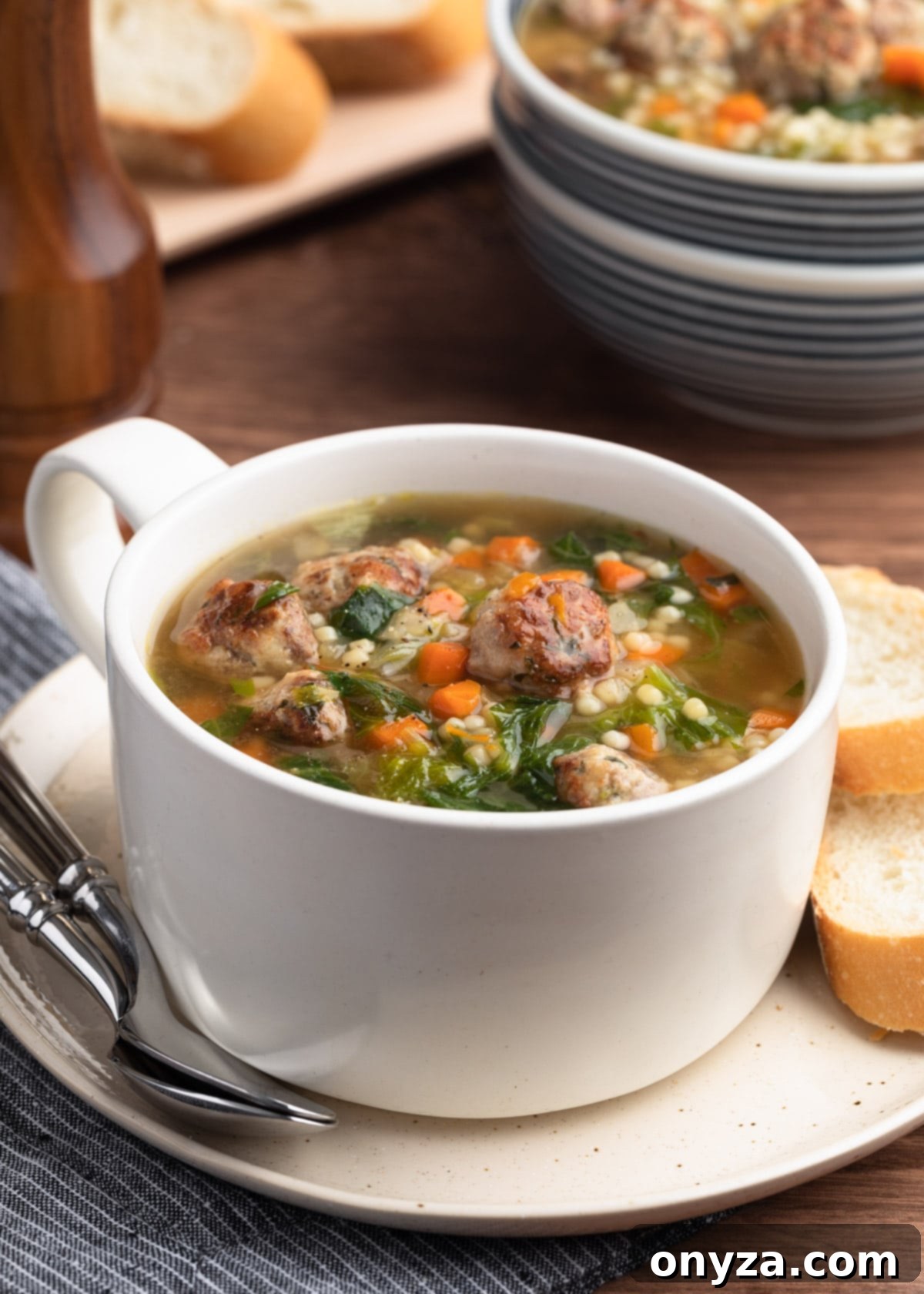
Understanding the Roots: The Story Behind Italian Wedding Soup
Before you tie on your apron and begin cooking, let’s delve a little into the fascinating background of this beloved soup. While its name might conjure images of grand Italian weddings, the “marriage” in Italian Wedding Soup actually refers to the harmonious union of its ingredients, not a matrimonial celebration. This iconic dish is an Americanized variation of Minestra Maritata, a traditional Neapolitan and Southern Italian stew. The original Neapolitan phrase translates literally to “married soup,” signifying the perfect blend of leafy greens (often with a pleasing bitterness) and various meats, creating a balanced and robust flavor profile.
Our recipe proudly features Acini di Pepe, a charmingly tiny, pearl-shaped pasta. Its name, meaning “seeds of pepper” in Italian, perfectly describes its appearance and makes it a classic, essential addition to an authentic Italian Wedding Soup. These small pasta shapes cook quickly and absorb the rich flavors of the broth, adding a delightful texture without overpowering the other ingredients.
You might encounter other variations of this soup. For instance, some families tradition dictates finishing the soup with stracciatella—beaten eggs mixed with grated cheese, slowly drizzled into the hot broth to create delicate, silky ribbons. While this adds a lovely dimension, our family, and many others, prefer to enjoy stracciatella as a standalone soup, relishing its simplicity without the addition of meatballs or pasta. This recipe honors our family’s long-standing tradition, focusing on the hearty meatballs, pasta, and greens that define our favorite version.
Crafting the Perfect Italian Wedding Soup: A Step-by-Step Guide
Bringing this comforting soup to life is a rewarding experience, broken down into two primary stages: meticulously shaping and browning the meatballs, followed by simmering the soup to perfection. The most significant portion of your time will be dedicated to preparing the meatballs. If you have an extra set of hands in the kitchen, this is the perfect opportunity to enlist a helper and speed up the process, making it a wonderful shared cooking experience!
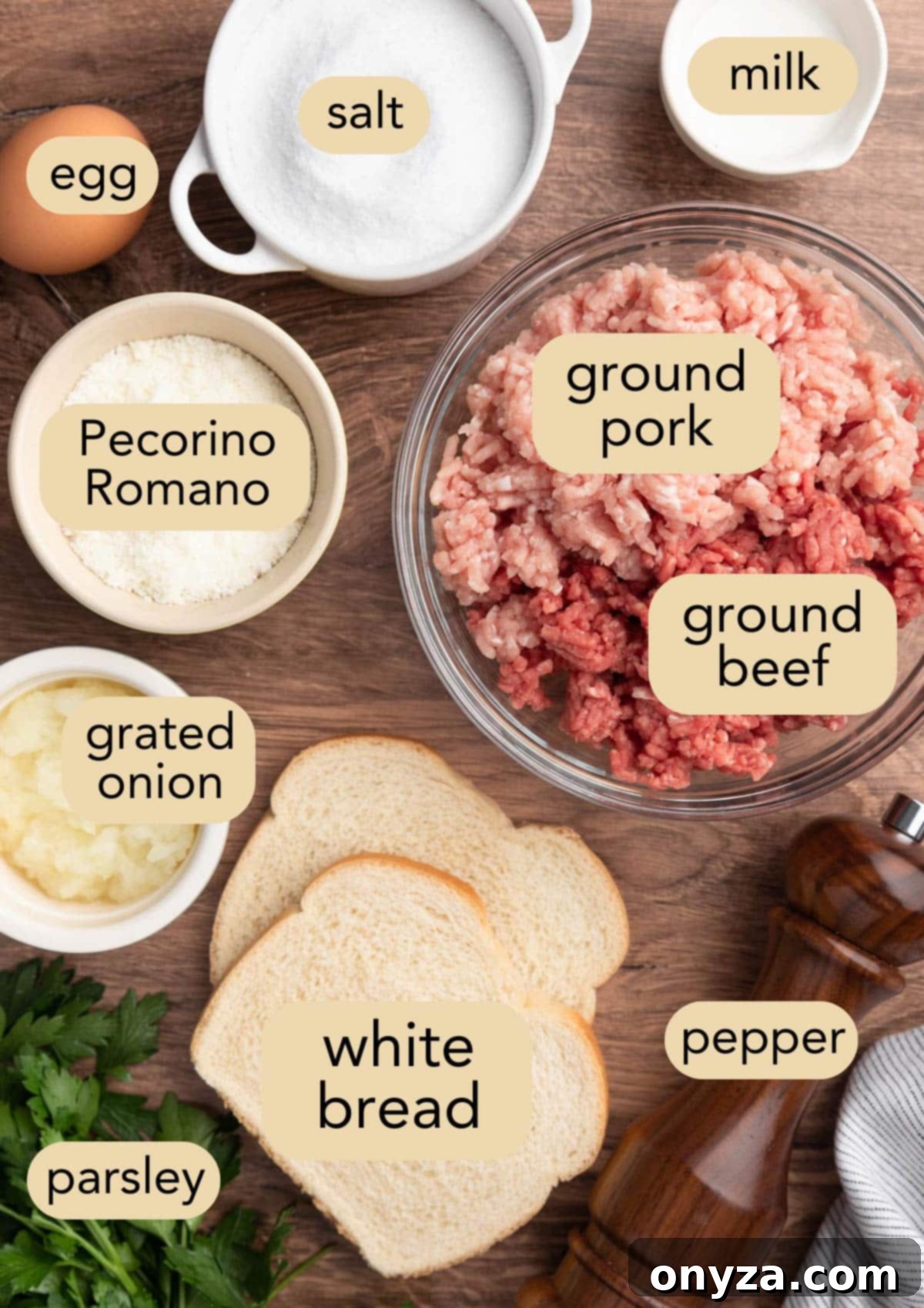
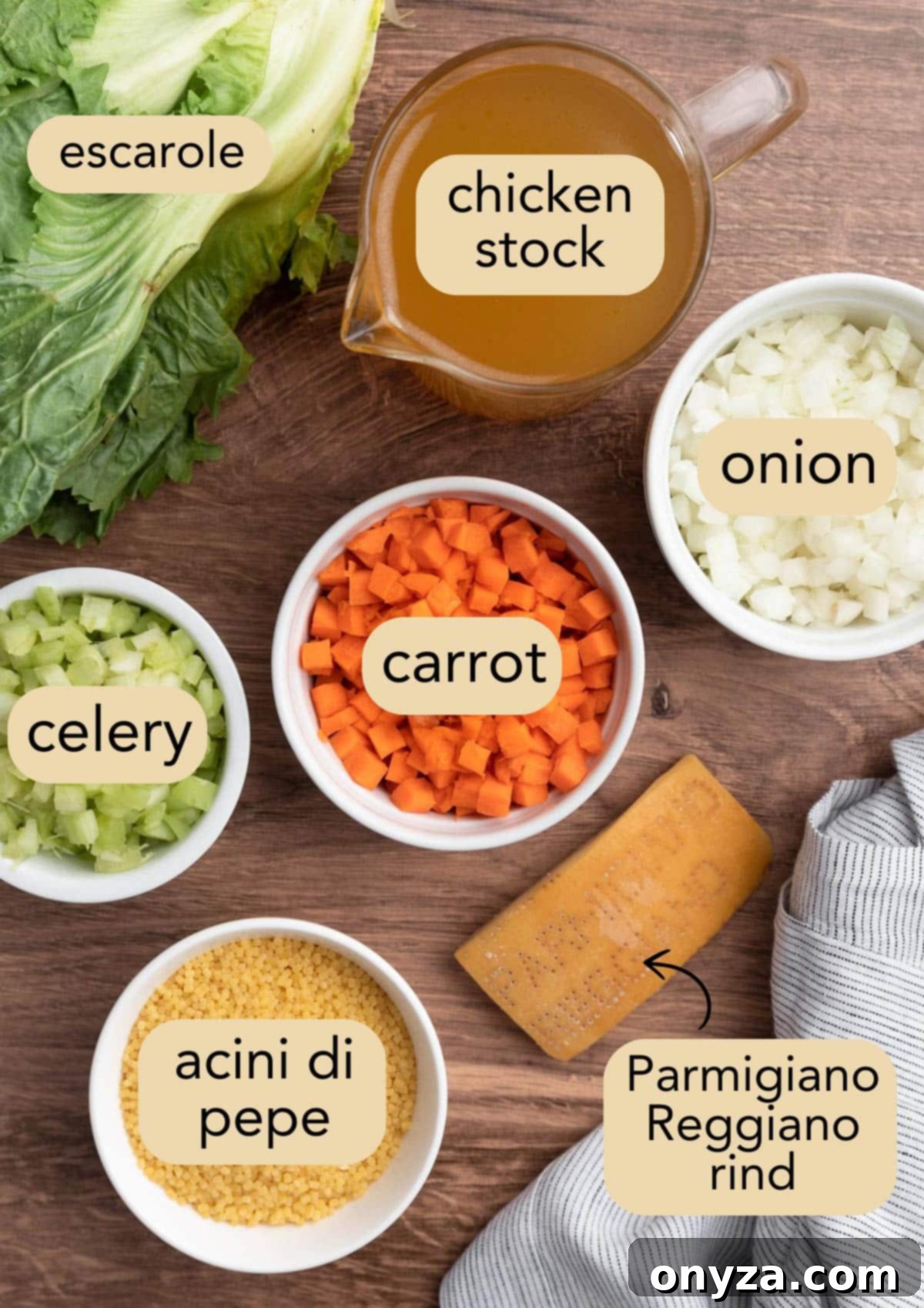
Step 1: Preparing the Flavorful Meatball Mixture
- Begin by creating a panade, a simple yet crucial step that ensures your meatballs remain incredibly moist and tender. Trim the crusts from slices of fresh white bread and tear the bread into small pieces, placing them into a mixing bowl. Pour a small amount of milk over the bread to moisten it, allowing it to sit for a few minutes to fully absorb the liquid. Then, use a fork to mash the softened bread until it forms a smooth, cohesive paste. This panade will bind the meat and lock in moisture, preventing dry meatballs.
- Into the panade, stir in the grated Pecorino Romano cheese (we highly recommend Locatelli for its sharp, salty flavor), finely grated yellow onion, a lightly beaten egg, freshly chopped parsley, salt, and freshly ground black pepper. Mix these ingredients thoroughly until they are fully combined. Ensure the onion is grated finely, as larger pieces can affect the texture of the small meatballs.
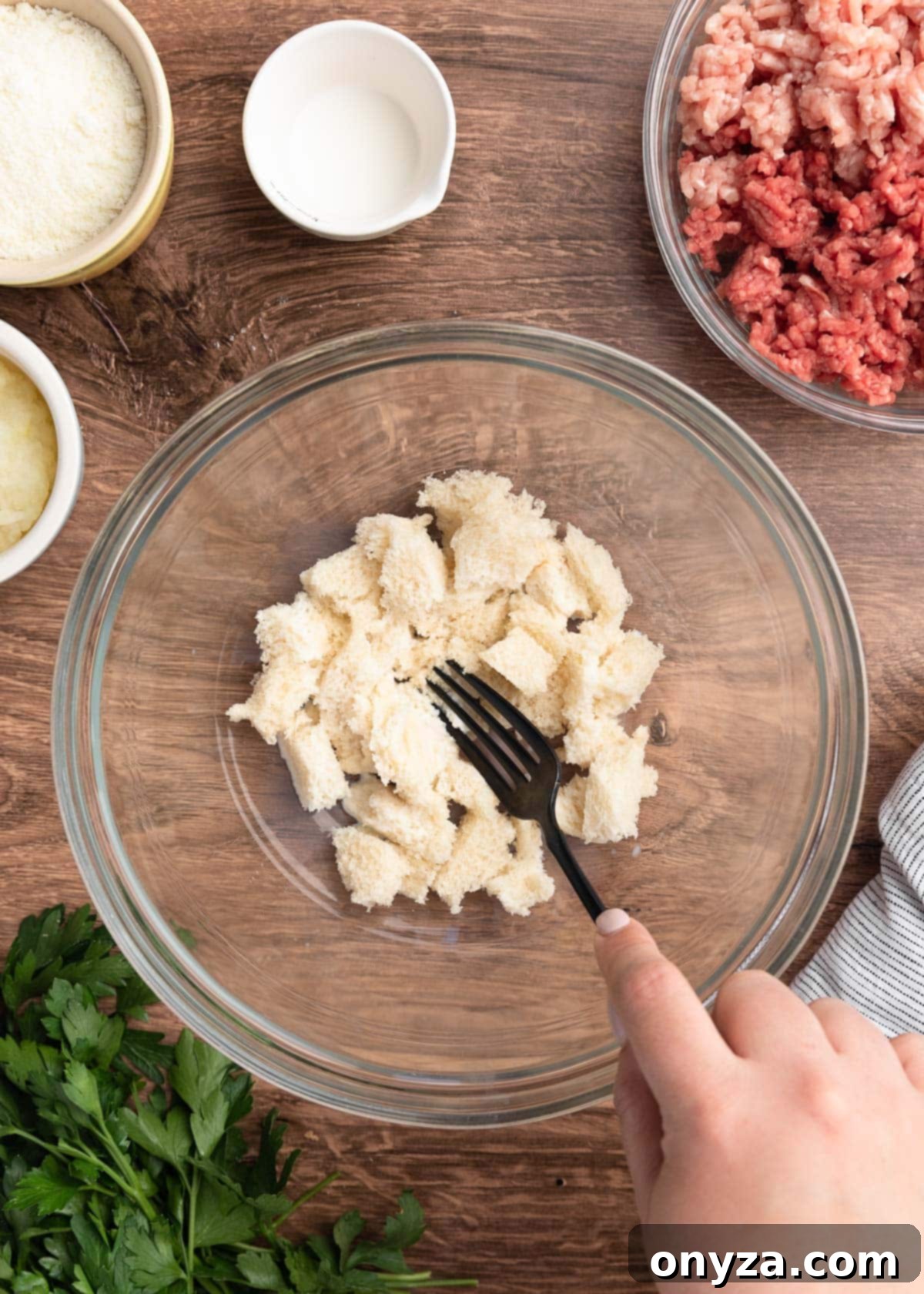
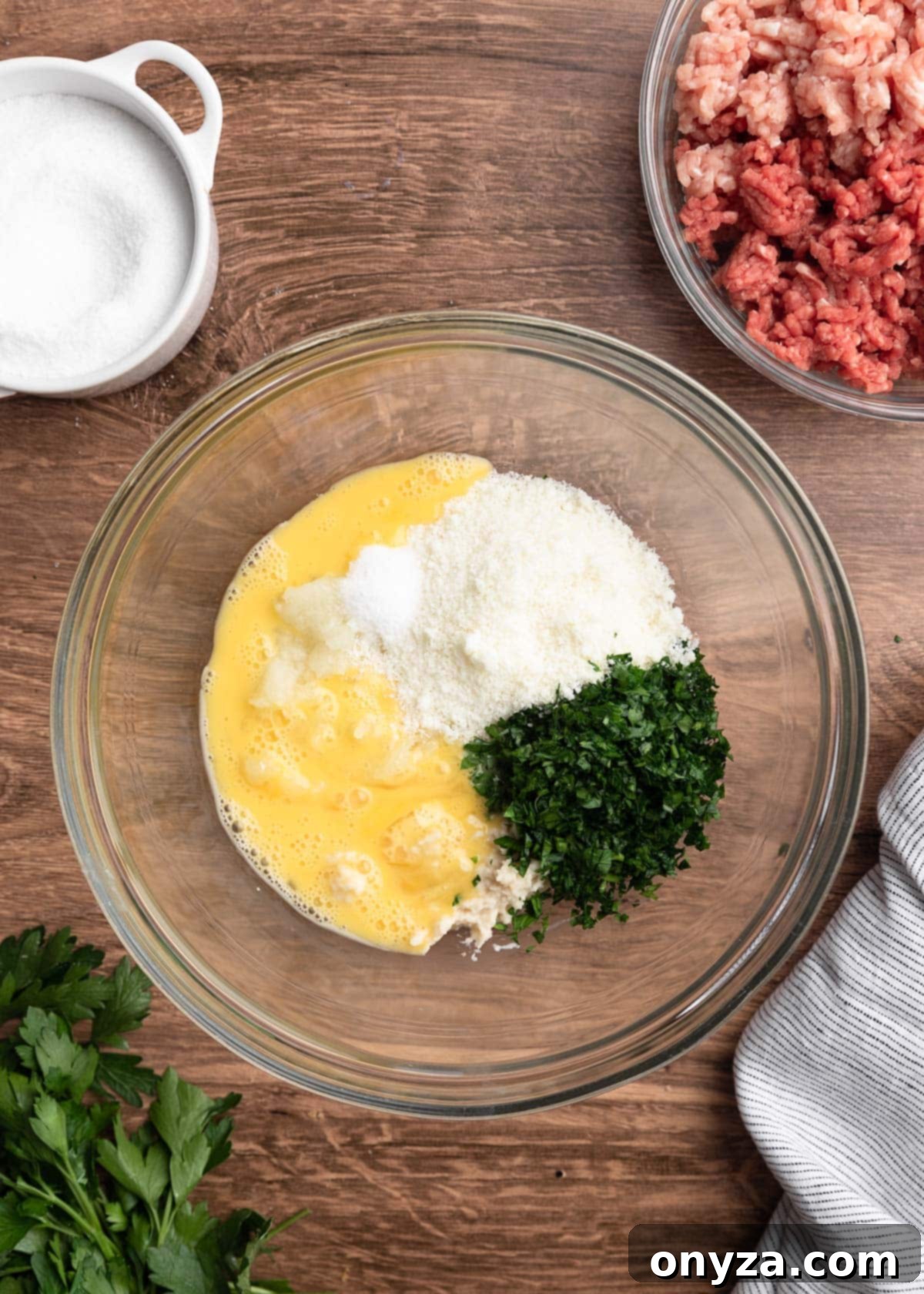
Chef’s Tip: When grating the onion, use the large holes of a sharp box grater. Be mindful of your knuckles to avoid injury! The grated onion pulp will be quite moist. If it releases an excessive amount of liquid, gently strain off the excess to prevent the meatball mixture from becoming too loose or watery. This ensures your meatballs hold their shape beautifully.
- Next, add the ground beef (ideally an 85% lean/15% fat blend, often labeled “ground round”) and ground pork to the mixture. Using a fork or your hands, mix the ingredients gently until they are just combined. It’s crucial to avoid over-mixing, as this can lead to dense, tough meatballs. The goal is a light, tender texture that melts in your mouth.
- Before you start shaping all the meatballs, take a small spoonful of the mixture and cook it in a skillet until browned. This allows you to taste-test and adjust the seasoning. Add more cheese, salt, or pepper as needed to achieve your desired flavor. Remember, these meatballs will be simmering in a broth, so they should be well-seasoned to ensure a truly flavorful soup.

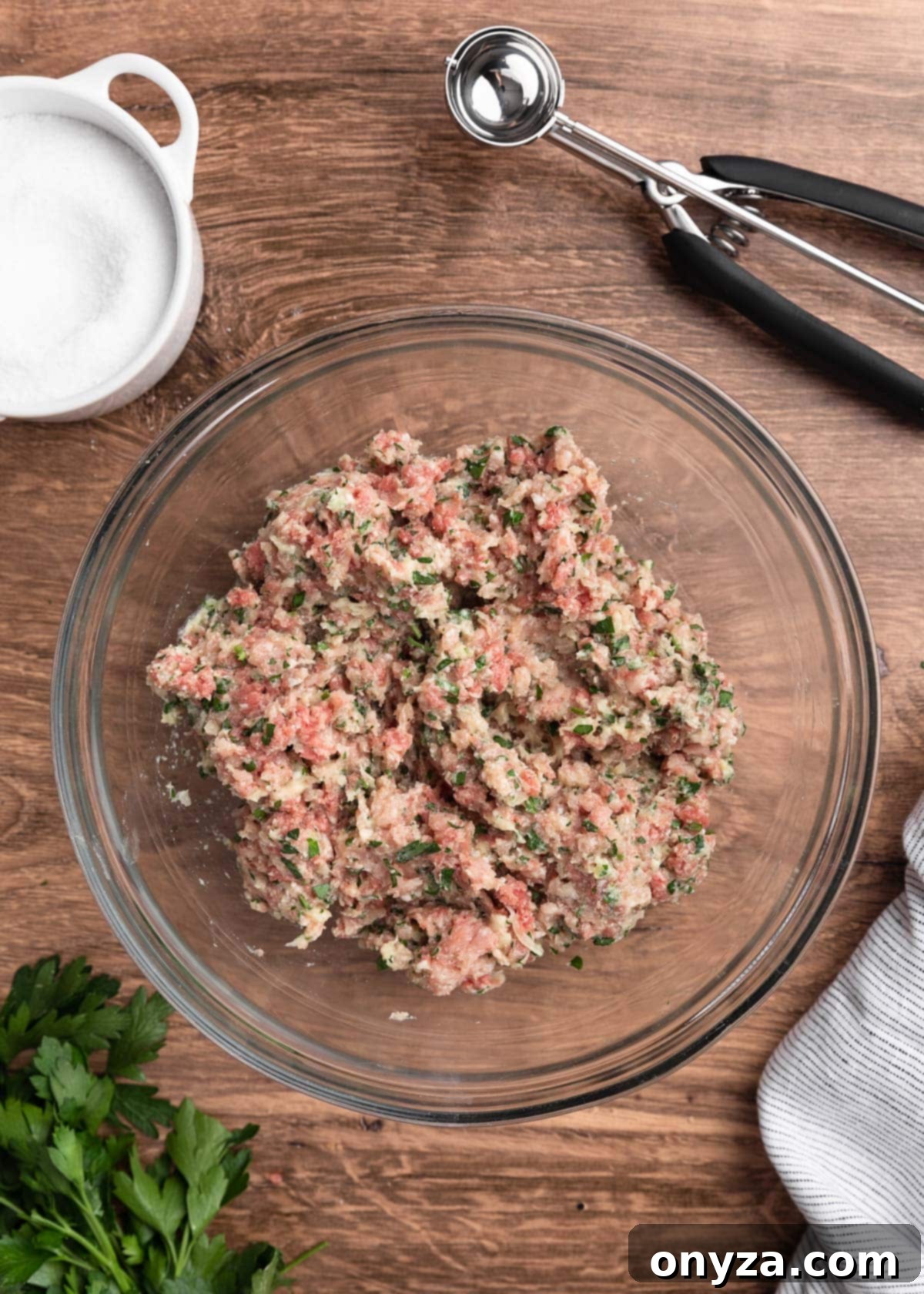
Step 2: Shaping and Browning the Meatballs for Depth of Flavor
This step is where your meatballs get their signature shape and begin to develop that delicious exterior crust which will contribute significantly to the soup’s overall flavor.
- Carefully shape the seasoned meat mixture into small, uniform meatballs. Aim for a diameter of about 1/2 to 3/4 inch. From this recipe, you should yield approximately 58 to 60 perfectly sized meatballs, ideal for a hearty spoonful.
- To prevent the meat mixture from sticking to your hands, lightly dampen them with cold water before you begin rolling. While shaping them by eye is common, for truly uniform meatballs, a small cookie scoop (specifically a half-tablespoon size) works wonders. This ensures each meatball cooks evenly and offers a consistent texture throughout the soup.
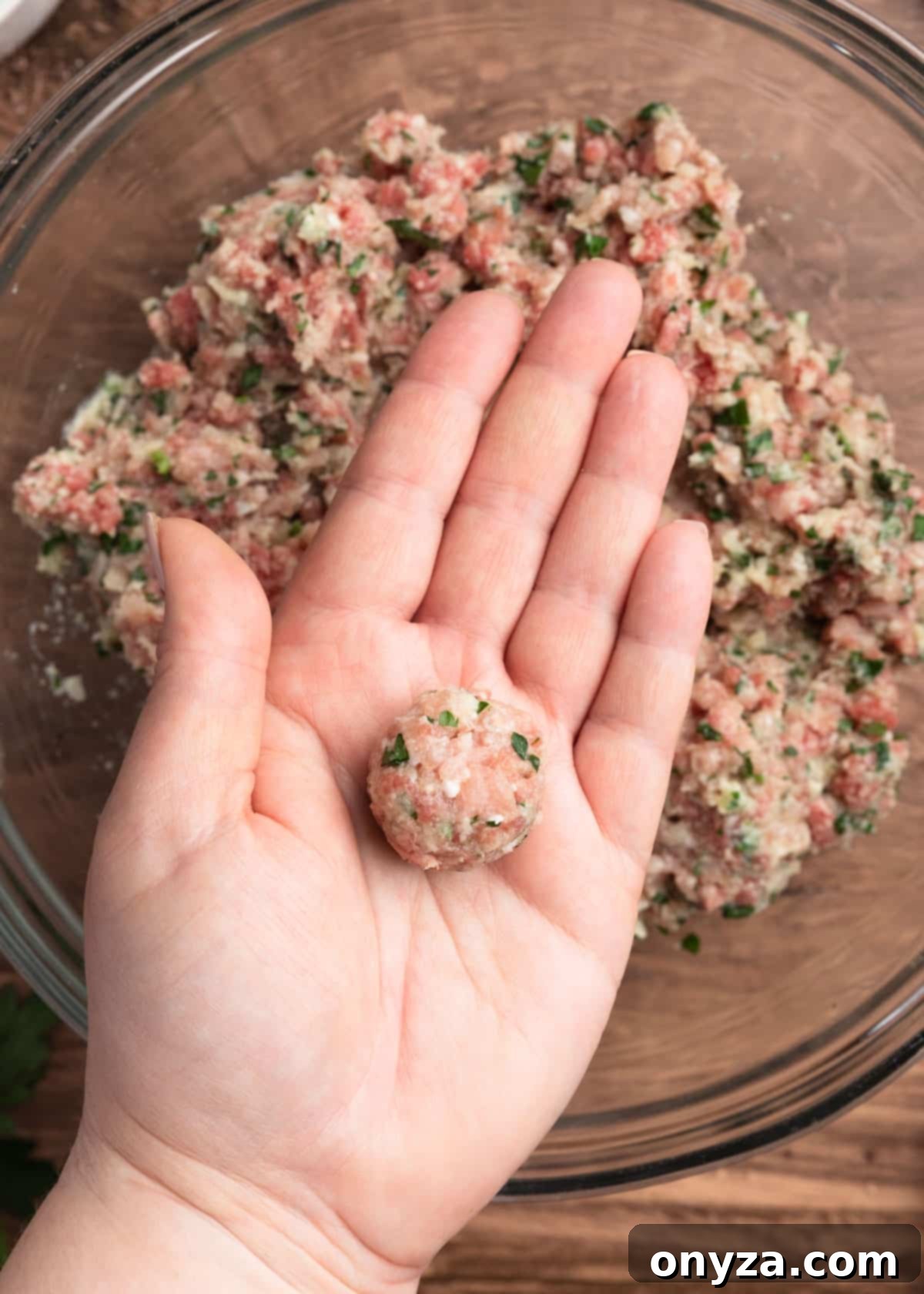

- Heat a good quality regular olive oil in your chosen soup pot (a 6.75-quart Le Creuset Round Wide Dutch Oven, as pictured, works beautifully) over medium-high heat. Once shimmering, brown the meatballs in batches. It’s crucial to leave ample space between each meatball in the pot to allow them to sear properly, rather than steam. In a Dutch oven of this size, two batches are usually sufficient. Browning creates a delicious crust and adds a deeper flavor profile to the meatballs, which will later infuse into the broth.
Important Note: At this stage, you are only browning the exterior of the meatballs, not cooking them through. Resist the urge to sneak a taste! The meatballs will finish cooking and become perfectly tender as they simmer in the flavorful broth, absorbing all the wonderful liquid.
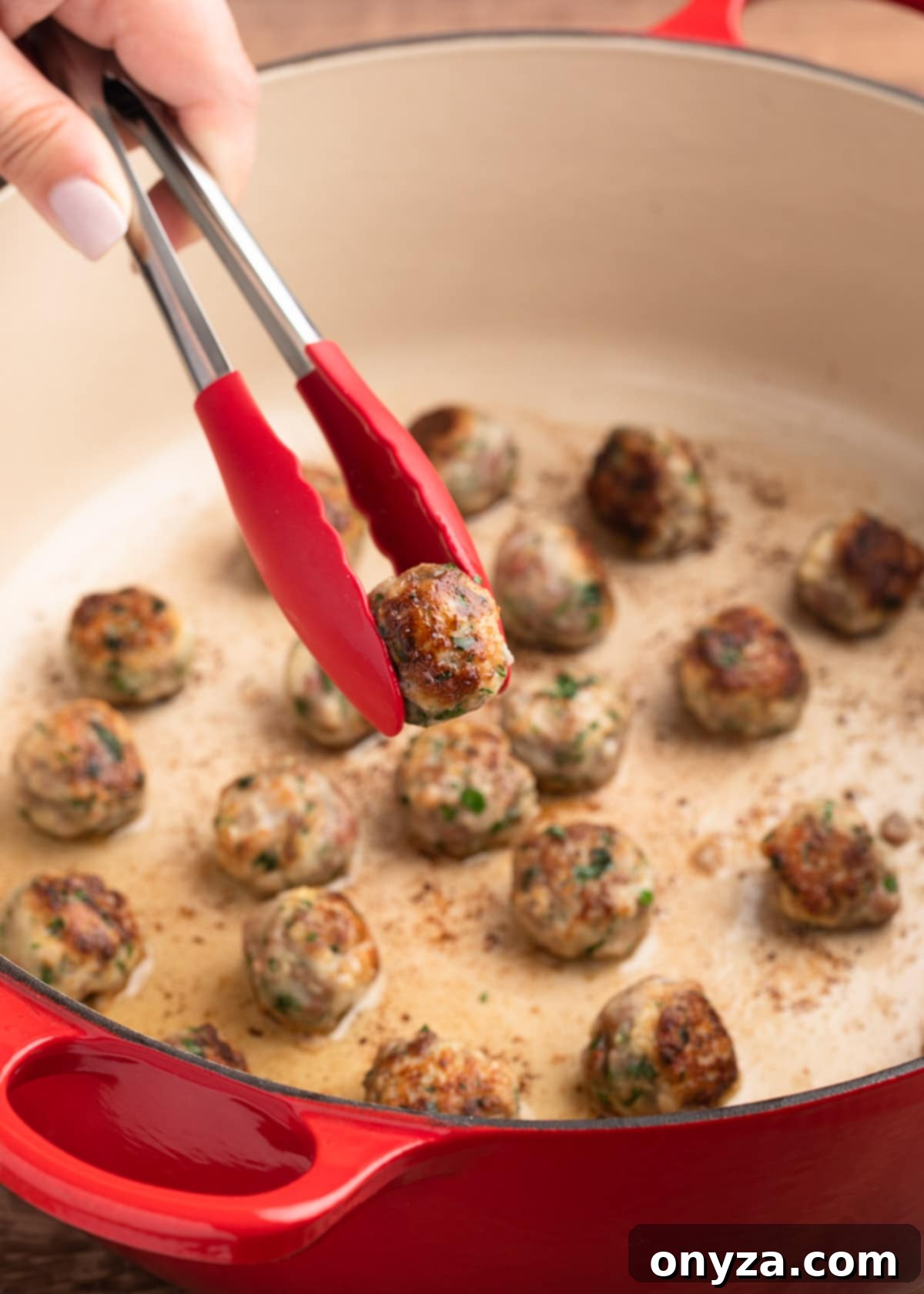
Step 3: Simmering the Soulful Broth
Once all your meatballs are beautifully browned, remove them from the pot and set them aside. Carefully pour out all but approximately 2 tablespoons of the rendered fat. This step is essential to prevent your delicious broth from becoming overly greasy, allowing the true flavors to shine.
Add your diced onions, carrots, and celery—the classic Italian mirepoix, or soffritto—to the pot. Season these aromatic vegetables with a pinch of salt and pepper. Cook them over medium-high heat for about 5 to 8 minutes, stirring frequently, until they begin to soften and become fragrant. This process, often called “sweating,” brings out their natural sweetness.
Now, pour in the chicken broth or stock. Using a sturdy wooden spoon, scrape up all the delicious browned bits, known as the “fond,” from the bottom of the pot. These bits are packed with concentrated flavor from the meatballs and vegetables, and deglazing them into the broth is crucial for a deeply savory soup. For optimal control over the soup’s saltiness, we recommend using a moderate- or low-sodium broth. You can always adjust the seasoning to taste after the soup has simmered.
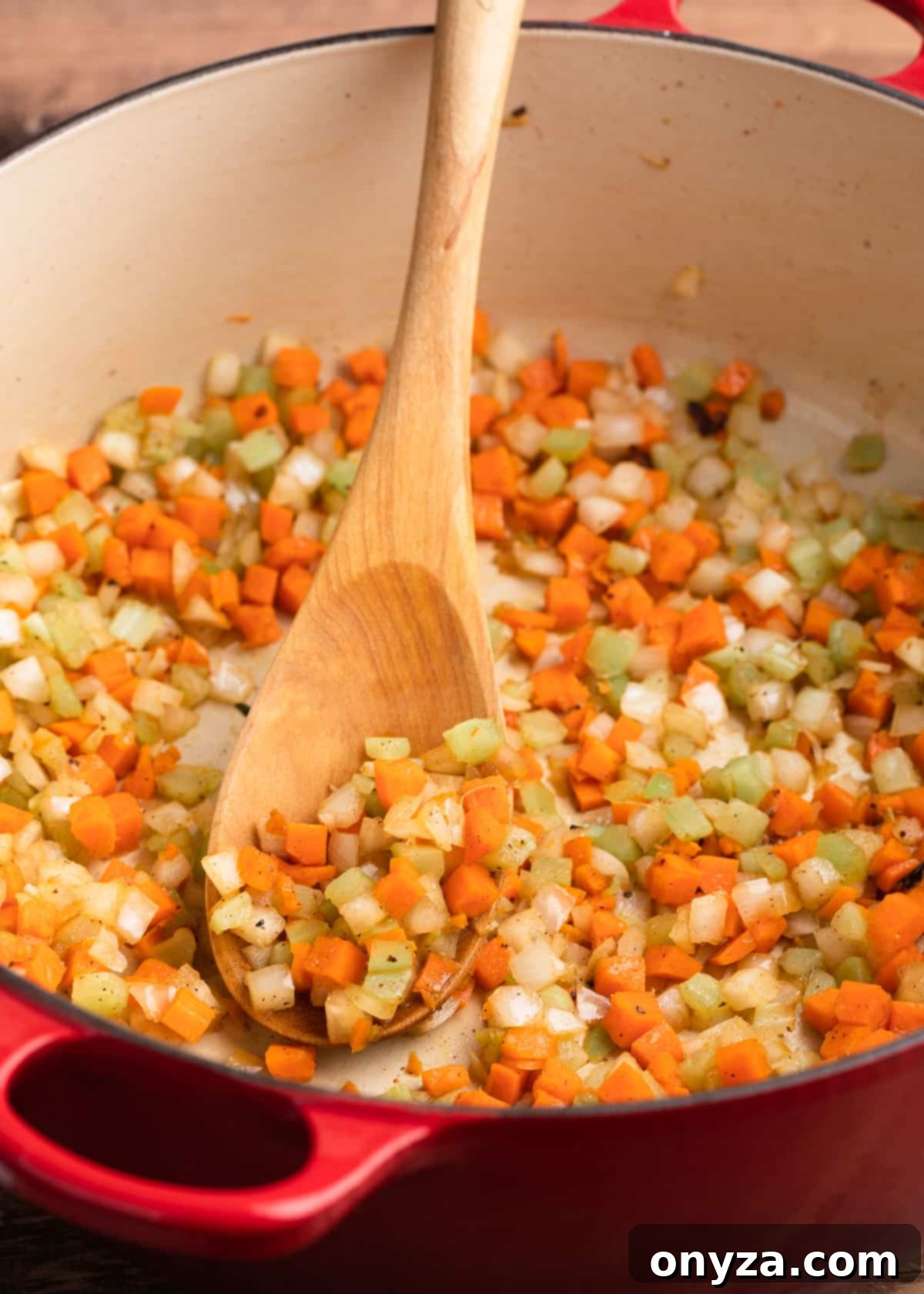
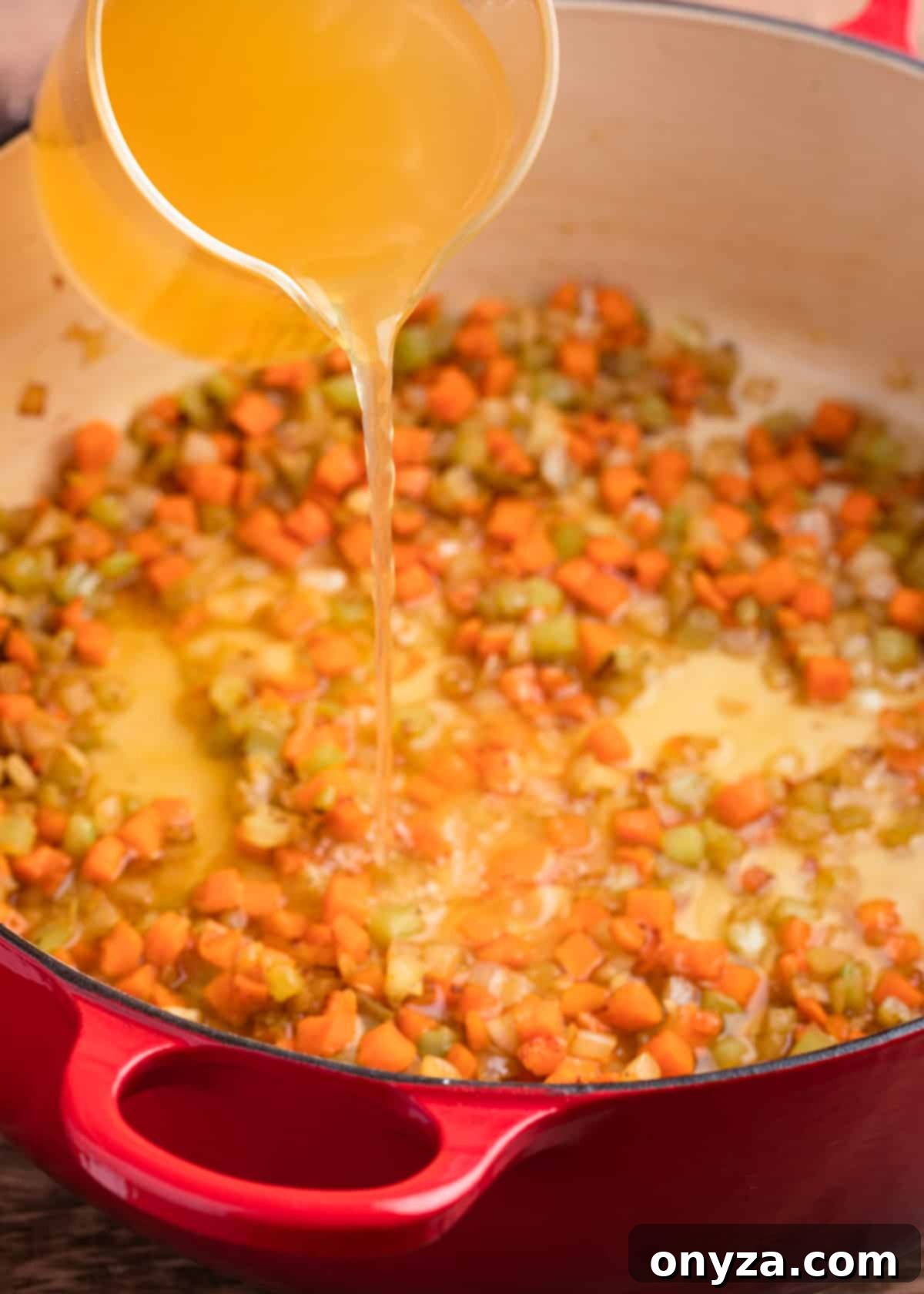
Return the browned meatballs to the pot, along with any juices that may have accumulated on the plate. Crucially, add a Parmigiano Reggiano rind to the broth. This secret ingredient is a game-changer, infusing the soup with an incredible depth of umami and a subtle nutty flavor as it simmers. Bring the entire mixture to a rolling boil.
- Once the broth is boiling vigorously, stir in the Acini di Pepe pasta. These tiny pasta pearls will cook directly in the flavorful broth, absorbing its essence.
- Partially cover the pot and reduce the heat to a gentle simmer. This allows the pasta to cook evenly and the flavors to meld beautifully without too much liquid evaporating.
- Cooking times for pasta can vary slightly depending on the brand and desired texture. Begin checking the pasta for doneness after about 10 minutes. If you, like our family, prefer a softer pasta in your soup, continue to cook it for closer to 15 minutes, or until it reaches your preferred tenderness.
Insider’s Tip: Adding the rind from a wedge of quality Parmigiano Reggiano is a simple yet incredibly effective trick for deeply enhancing the flavor of soups, stews, and sauces. Don’t discard these precious rinds! We always save ours when we grate fresh Parmesan, storing them in the freezer for future use. Many gourmet cheese counters at grocery stores also sell packaged rinds, making this flavor-boosting ingredient readily accessible.
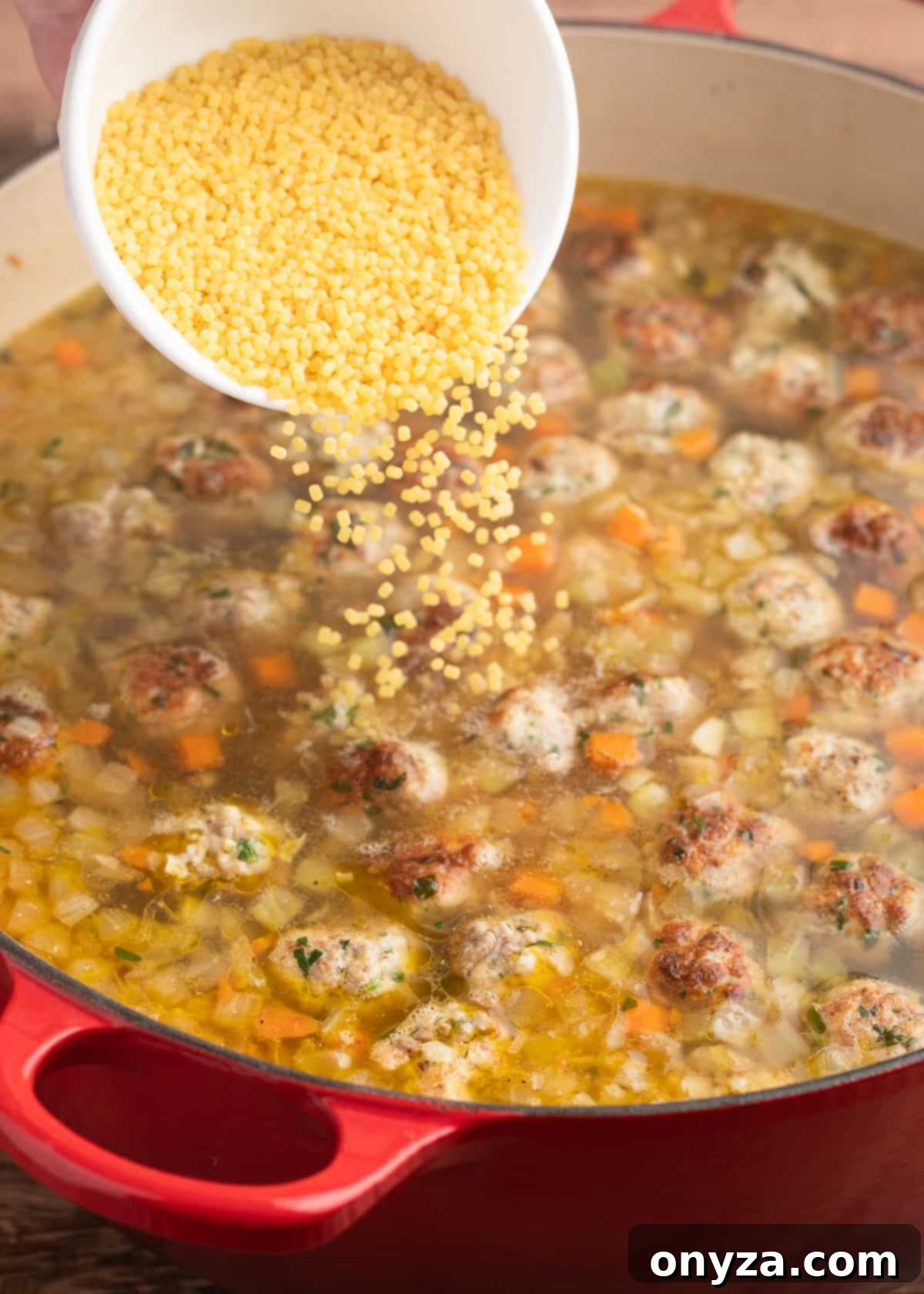
Step 4: Finishing the Soup with Fresh Greens
Approximately 5 minutes before the pasta is expected to be fully cooked, carefully remove the Parmigiano Reggiano rind from the pot and discard it. Now, it’s time to add the fresh escarole. Escarole, a member of the chicory family, is a leafy green known for its slightly bitter flavor, which provides a wonderful balance to the richness of the meatballs and broth in Italian Wedding Soup.
Before adding the escarole, make sure to roughly chop the leaves and clean them thoroughly. Escarole can sometimes harbor grit, so a proper washing is essential. We recommend soaking the chopped escarole in a colander set within a bowl of cold water. Allow any grit to settle to the bottom of the bowl, then rinse the greens thoroughly under cold running water. This ensures your soup is clean and enjoyable.
Continue to simmer the soup, uncovered, until the escarole leaves are beautifully wilted and tender. This typically takes about 5 minutes. Once the greens are cooked, take a spoon and skim any excess fat that may have collected on the surface of the soup. The amount of fat you’ll need to skim will depend on the leanness of the ground meat used for your meatballs. This final step results in a clear, vibrant, and perfectly balanced broth.
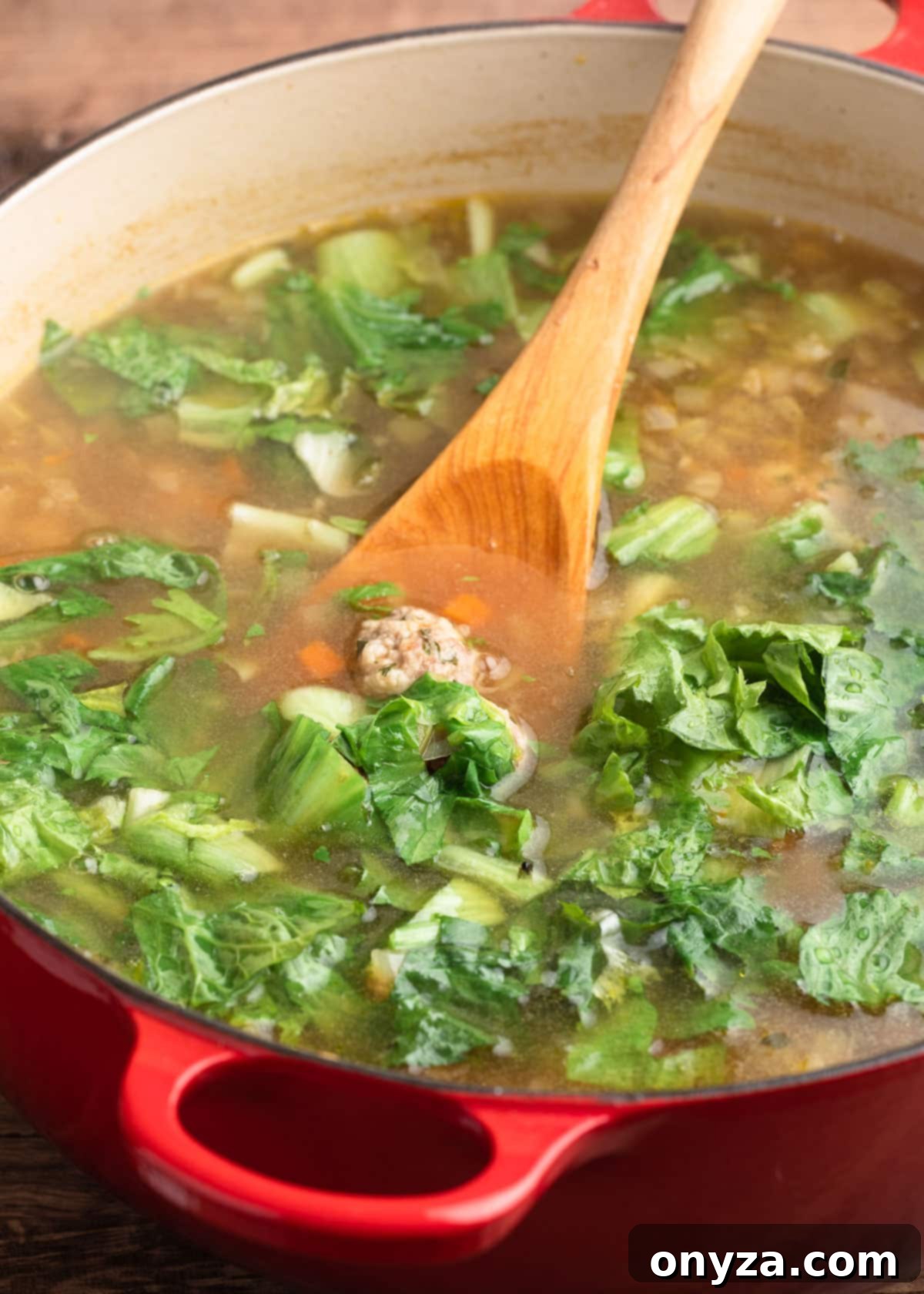
Versatile Cooking: Exploring Variations and Substitutions
While our family recipe offers a classic and beloved version of Italian Wedding Soup, there’s always room to personalize it to your taste or dietary preferences. Here are some popular variations and substitutions:
Experiment with Ground Poultry: Chicken or Turkey Meatballs
For those looking for a lighter alternative, ground chicken or turkey can make excellent meatballs. However, for the best flavor and texture, it’s crucial to avoid using only ground breast meat, as extra-lean poultry can result in drier, less tender meatballs. A good fat content is key for juicy results.
- Ground Turkey: This is typically available in 85% lean/15% fat and 93% lean/7% fat varieties. To ensure the juiciest meatballs, we recommend using entirely the 85% lean/15% fat ground turkey, or a combination of both blends to achieve a balanced texture and moisture.
- Ground Chicken: When selecting ground chicken, look for packages simply labeled “lean” or “ground chicken” (which usually contains around 96% lean/4% fat, made from a mix of breast and thigh meat). Be cautious of “extra lean” ground chicken (typically 98% lean/2% fat), which is often labeled “ground chicken breast.” This can yield significantly drier meatballs due to its minimal fat content.
Pasta Alternatives: Swapping the Shapes
While Acini di Pepe is traditional, you can easily substitute other small pasta shapes to change the soup’s texture. Consider:
- Ditalini: Small tube-shaped pasta, perfect for catching broth.
- Orzo: Rice-shaped pasta that blends seamlessly into the soup.
Remember to adjust the cooking time as needed for different pasta types, as their sizes and densities will vary.
Leafy Green Choices: Beyond Escarole
The type of leafy green used can significantly alter the soup’s flavor profile. While escarole provides a delightful slight bitterness, other options include:
- Spinach: For a milder, less bitter flavor, fresh spinach is an excellent choice. Simply add your coarsely chopped spinach leaves to the soup during the final 5 minutes of simmering. Spinach wilts down more quickly than escarole, so keep an eye on it to avoid overcooking.
- Curly Endive: Some connoisseurs prefer curly endive in Italian Wedding Soup for its distinctly stronger, more pronounced bitter flavor. While not our family’s preferred choice, if you are a fan of robust bitter greens, this substitution might be perfect for you. Due to its slightly tougher texture, curly endive will require a longer cooking time than escarole, so allow approximately 10 minutes of simmering to ensure it becomes tender.

Serving and Storing Your Homemade Italian Wedding Soup
Once your Italian Wedding Soup is hot and ready, it’s time to enjoy! We love to serve our soup piping hot, garnished with a few generous grinds of fresh black pepper and a final sprinkling of finely grated Parmigiano-Reggiano cheese right before serving. In our household, a warm, crusty loaf of fresh Italian bread is an absolute must-have companion. Its chewy texture and ability to soak up the rich, flavorful broth make it the perfect dipping vessel, completing the ultimate comforting meal.
For leftovers, store the soup in an airtight container in the refrigerator for up to 3 days. It’s important to note that as the soup sits, the pasta will continue to absorb liquid and soften, potentially soaking up a significant amount of the broth. When reheating the soup after a day or two, you might find it necessary to add additional chicken broth to the pot to restore it to your desired consistency and ensure it remains deliciously soupy.
Pro Tip for Perfect Leftovers: If you’re not a fan of the softer, next-day pasta texture, there’s a simple solution. You can cook the pasta separately. When initially making the soup, omit the Acini di Pepe. Instead, cook the pasta in a separate pot of chicken broth until it reaches an al dente texture or your preferred level of doneness. Drain the cooked pasta, lightly toss it with a teaspoon or two of olive oil to prevent sticking, and then store it in an airtight container in the refrigerator, separate from the soup. When it’s time to enjoy leftovers, simply reheat the soup base and add the pre-cooked pasta directly into your individual serving bowls, ensuring fresh-tasting pasta every time.

Explore More Comforting Soup Recipes
If you’ve fallen in love with the warmth and flavor of our Italian Wedding Soup, we invite you to discover more of our favorite hearty and comforting soup recipes:
- Classic Split Pea Soup with Ham
- Hearty Minestrone Soup
- Creamy Chicken Gnocchi Soup
- Rich Creamy Sausage Tortellini Soup
- Velvety Broccoli Cheddar Soup
Craving even more deliciousness? Dive into our extensive collection of Soup & Stew Recipes for endless culinary inspiration!

Pin Recipe
Print Recipe
Authentic Italian Wedding Soup
Ingredients
For the Meatballs
- 1 to 1-1/2 slices white bread, crusts removed and torn into small pieces (about 3/4 cup)*
- 2 tablespoons milk (whole or 2%)
- 1 small yellow onion, grated on a box grater (about 1/3 cup)**
- 1 large egg, lightly beaten
- ½ cup grated Pecorino Romano cheese
- ⅓ cup chopped fresh Italian (flat-leaf) parsley
- 1 teaspoon kosher salt
- Pinch freshly-ground black pepper
- ½ pound ground beef (85%/15% lean)
- ½ pound ground pork
For the Soup
- 2 tablespoons olive oil (not extra virgin)
- 1 cup diced yellow onion (1/4 inch dice)
- 1 cup diced carrot (1/4 inch dice)
- ¾ cup diced celery (1/4 inch dice)
- 12 cups chicken broth or stock***
- 1 medium rind from a block of Parmigiano Reggiano
- ¾ cup dried Acini di Pepe pasta
- 1 head escarole (about 1 pound), washed well and roughly chopped
- Kosher salt and freshly-ground black pepper, to taste
Instructions
Prepare the Meatballs
- In a large bowl, create a panade by combining the torn bread pieces and milk. Let stand for 5 minutes to absorb, then mash with a fork until a smooth paste forms.
- Stir in grated onion, beaten egg, Pecorino Romano, parsley, salt, and a pinch of black pepper until well combined.
- Add ground beef and pork, mixing gently with a fork or hands until just combined (do not over-mix to keep meatballs tender). Cook a small spoonful in a skillet to test seasoning; adjust salt, cheese, or pepper as needed.
- Shape the meatball mixture into 1-1/2 teaspoon portions (about 3/4 inch diameter). Dampen your hands with cold water for cleaner shaping. Set aside.
Assemble and Simmer the Soup
- Heat olive oil in a large, heavy-bottomed pot or Dutch oven over medium-high heat until shimmering.
- Add half of the meatballs and lightly brown for 2-3 minutes per side. Remove to a plate and repeat with remaining meatballs. (Meatballs will not be cooked through; they will finish in the soup).
- Drain all but 2 tablespoons of fat from the pot. Add diced carrot, onion, and celery with a pinch of kosher salt and black pepper. Cook, stirring frequently, until vegetables begin to soften, 5-8 minutes.
- Pour chicken broth or stock into the pot, scraping up any brown bits (fond) from the bottom. Return meatballs and any accumulated juices to the pot, along with the Parmigiano Reggiano rind.
- Bring the soup to a boil, then stir in the Acini di Pepe. Reduce heat, partially cover, and simmer for 10-15 minutes, or until pasta is tender.
- Remove and discard the cheese rind. Add the chopped escarole and simmer, uncovered, until wilted and tender, about 5 minutes. Skim any excess fat from the top of the soup.
- Season the soup with additional salt and pepper to taste, if needed. Serve hot, topped with extra grated Parmesan if desired, and enjoy with crusty Italian bread.
Notes
**Grated onion can be very juicy. If it releases an excessive amount of liquid, drain some off to ensure the meatball mixture isn’t too moist to hold its shape.
***For broth, we typically use homemade or a high-quality regular grocery store variety. If you’re mindful of salt intake, opt for a low-sodium broth or stock and adjust seasoning to taste at the end.
Nutrition Estimate
Nutrition information is automatically calculated, so should only be used as an approximation.
Please note that our recipes have been developed using the US Customary measurement system and have not been tested for high altitude/elevation cooking and baking.
Editor’s note: This recipe was originally published on Striped Spatula in January 2023. We have updated the blog post with improved copy for a better reader experience, enhancing its clarity, SEO, and detail.
